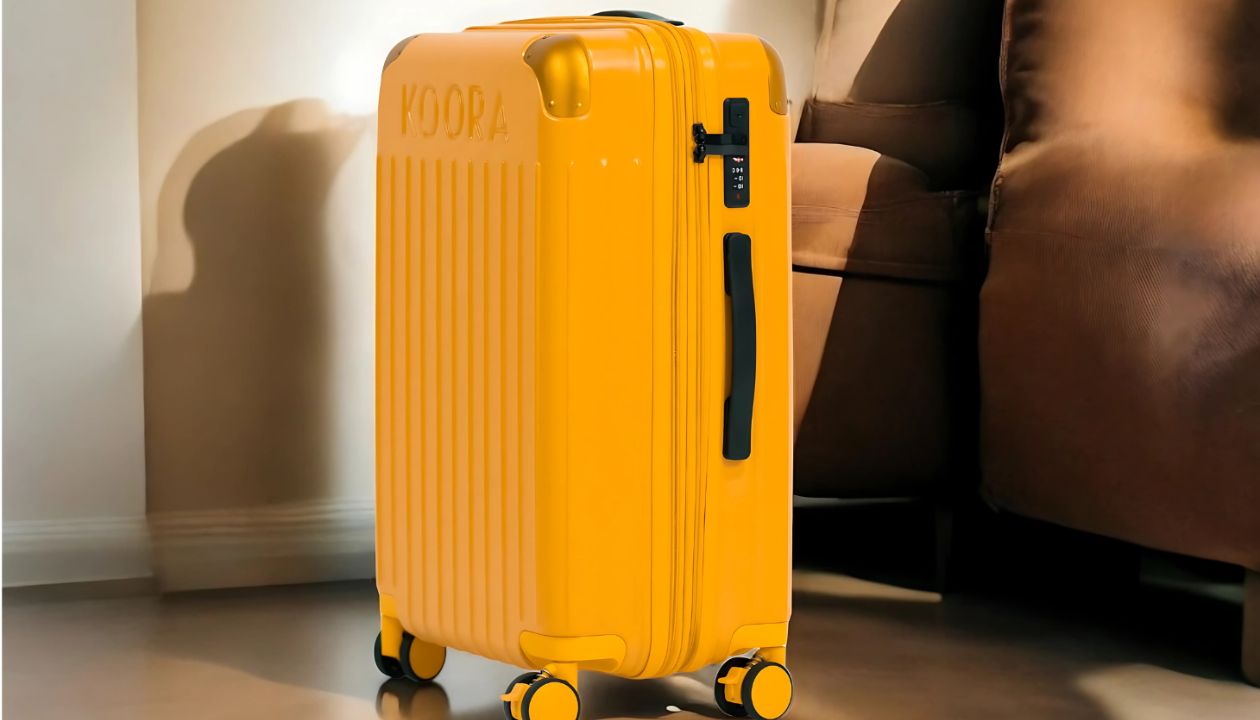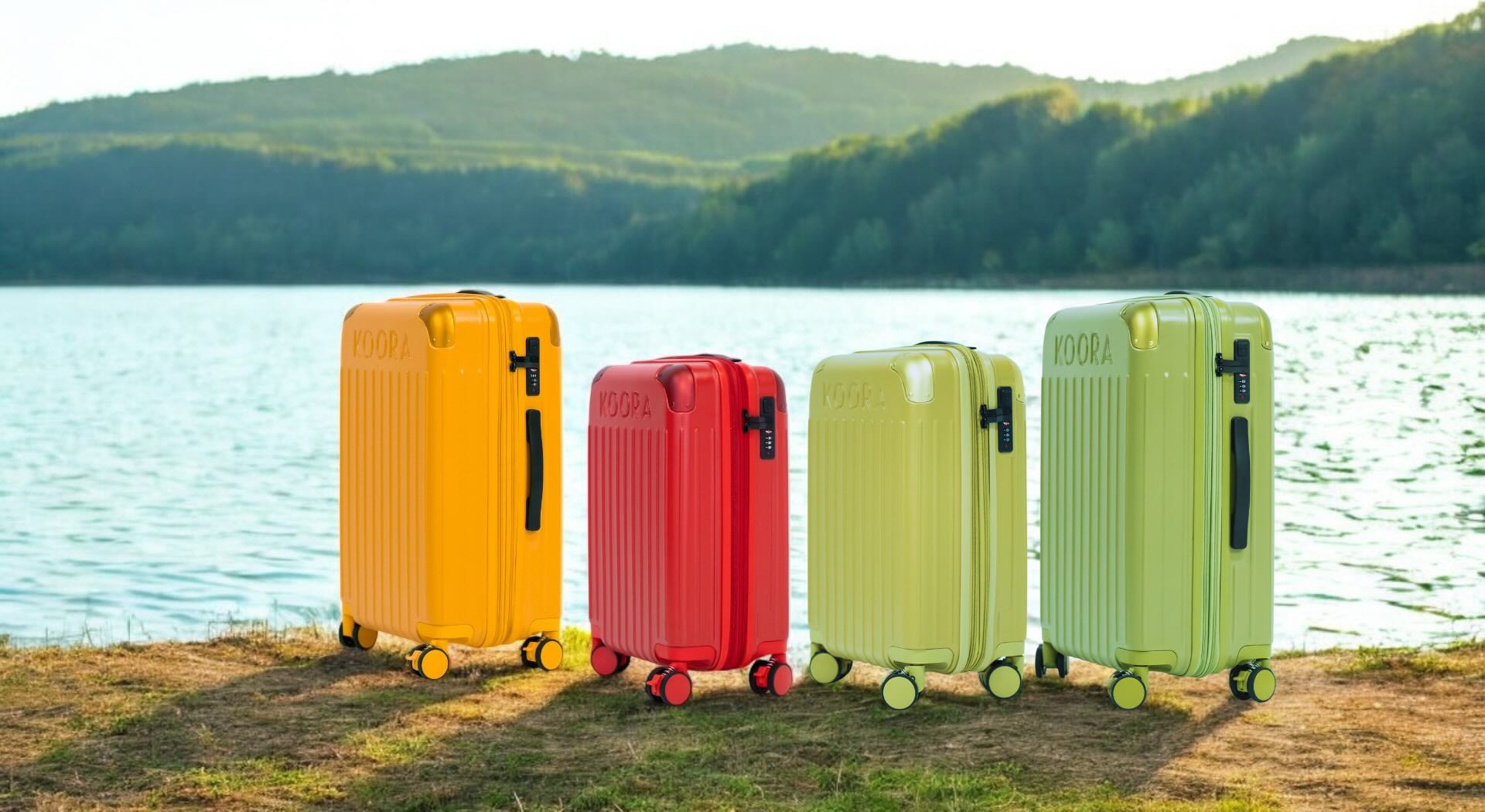
Biodegradable vs. Recyclable Luggage: What's Better for the Planet?
Now that responsible buying is a must, sustainable travel is increasing, and at the centre of it all is your luggage. As you search for eco-conscious travel gear, you’ve probably noticed that both biodegradable and recyclable are common terms.

Each one is a great choice for our planet. They both add another means of avoiding waste. In terms of durability, longevity, and performance with luggage, the question we should ask is: Which is better for the environment: biodegradable or recyclable models? To know the answer to the question, we’ll look at what each type offers, along with its strengths, weaknesses, and the impact they have on the environment
Understanding the Basics
What Makes Luggage Biodegradable?
Luggage made of biodegradable materials dissolves naturally after being discarded. Bacteria, fungi, and moisture in nature naturally cause these materials to break down into safe residues.
Frequent biodegradable materials in luggage products are:
-
You can also look for clothes made from organic cotton, hemp, and jute.
-
Bio-plastics that come from using cornstarch or sugarcane
-
Mushroom leather uses mycelium as its main material.
-
Natural rubber
Biodegradable luggage usually weighs less, is safe for the environment, and requires fewer chemicals to make.
What Exactly Is Recyclable Luggage?
Using recycled materials, good recyclable luggage is made so that it can be turned into new products, forming a full circle. For example, items can contain recycled parts from other items and also be designed so that they can easily be recovered when taken apart.
Typical things that can be recycled include:
-
Bottles made from plastic are recycled and reused.
-
Recycled aluminum
-
Thermoplastics
-
Elements in the home that can be fixed, changed, or repurposed
The objective is to reuse what can be reused at the end of a product’s lifespan, avoiding it from being thrown in a landfill.
Environmental Impact: Biodegradable vs. Recyclable
So, how do these two options compare in terms of their environmental footprint?
Biodegradable Pros:
-
- Natural decomposition means no long-term waste
-
Typically produced with fewer chemicals
-
Lower risk of micro-plastic pollution
-
Often compostable (in industrial or home settings)
Biodegradable Cons:
-
Durability issues: Plant-based fabrics and bio-plastics may degrade more quickly, especially when exposed to heat, water, or heavy use
-
Not all biodegradable materials break down quickly outside of controlled composting facilities
-
Shorter product lifespan may lead to more frequent replacements
Recyclable Pros:
-
Longer product life: Many recyclable materials are chosen for strength and durability
-
Designed for multiple life-cycles, reducing the need for virgin resources
-
Many companies now offer take-back or repair programs
Recyclable Cons:
-
Recycling systems vary widely by region—many recyclable items still end up in landfills
-
Some materials require high-energy processes to be recycled
-
May still involve synthetic, non-biodegradable components that eventually contribute to micro-plastic pollution
Performance and Practicality for Travellers
When it comes to luggage, durability matters; your suitcase or backpack needs to handle rough terrain, unpredictable weather, and frequent handling without falling apart.
Biodegradable Luggage:
Best suited for lightweight travel, weekend getaways, or business trips where you're not exposing the bag to harsh conditions. These are often more stylish and natural-looking, but less rugged.
However, most fully biodegradable luggage is still in the niche market—mainstream options with zippers, wheels, or reinforced handles still rely on synthetic or semi-synthetic materials that aren’t biodegradable.
Recyclable Luggage:
Ideal for frequent flyers, digital nomads, and adventure travellers. These bags are made to last, and often come with features like water resistance, reinforced stitching, and modular repair systems. They may not break down naturally, but their extended use and repurposing make them a solid eco-option. One such brand is Koora, which makes eco-friendly recycled carry-on luggage and checked-in luggage for travellers.
End-of-Life Solutions
How your luggage is disposed of matters as much as how it’s made.
Biodegradable Bags:
Can be composted or naturally decompose—assuming you remove any non-biodegradable parts (like metal zippers or synthetic linings). However, this isn’t always practical unless the entire bag is compost-certified.
Recyclable Bags:
If the bag is modular, it can be disassembled, and specific components can be recycled. Some companies offer lifetime guarantees, repair services, or return-and-recycle programs to make this easier.
Ultimately, recyclable bags are more compatible with circular economy models, where the goal is not just disposal, but reuse.
Which One’s Better for the Planet?
The answer isn’t black and white—it depends on how you travel, how often you replace your gear, and whether you can dispose of it responsibly.
Choose Biodegradable Luggage If:
-
You prefer natural, chemical-free materials
-
You’re committed to minimalist or low-impact travel
-
You don’t need your bag to endure constant, rugged use
-
You have access to composting or zero-waste disposal options
Choose Recyclable Luggage If:
-
You’re a frequent traveller
-
You want a long-lasting, high-performance bag
-
You value repair-ability and modular design
-
You’re willing to recycle through take-back programs or specialty facilities
The Ideal Future: Blended Models
Some bags designed today are made with both biodegradable organic materials and recyclable materials. Going for this mix enables us to achieve results with less strain on the environment.
Modular bags with exchangeable components, materials that can be composted, and leased bags designed for resuming are also being considered.
Aiming for things that break down and can be reused for numerous cycles is the ultimate goal in a circular economy, and that is what design is now focused on.
Final Thoughts: Make Conscious Choices
If you’ve made it this far, you already care about your environmental footprint—and that’s what matters most. Whether you choose biodegradable or recyclable luggage, intention is key. Ask yourself:
-
How long will I use this bag?
-
Can I repair it instead of replacing it?
-
Will I dispose of it responsibly?
At the end of the day, the most sustainable luggage is the one you use for years, treat with care, and dispose of mindfully.
Choose gear that aligns with your lifestyle and values, not just what’s trending. Because the best travel stories don’t come from what you carry, but how you carry your responsibility for the planet.



Leave a comment
This site is protected by hCaptcha and the hCaptcha Privacy Policy and Terms of Service apply.